| Title | Image | Page Summary: |
|---|---|---|
| Pariset - New Book of Principles of Drawing | ||
| Pariset - New Book - Page 1 |
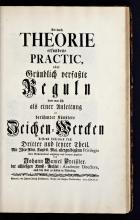
|
This document is the title page of the third and final part of a book on drawing principles. It offers practical rules based on theory for artists, with Johann Daniel Preissler as the director of this artistic academy. The book was published in Nuremberg in 1761, under the privilege of the Roman Imperial Majesty. |
| Pariset - New Book - Page 2 |
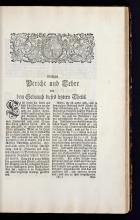
|
This page introduces the third and final part of a drawing guide, addressing longstanding issues in the art of drafting, such as shading and drapery techniques. The author aims to provide useful guidance while avoiding unnecessary errors and respecting traditional methods. Emphasis is placed on repeated practice and the application of necessary skills for improvement. |
| Pariset - New Book - Page 3 |
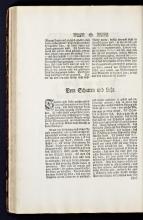
|
The text discusses the essential role of shadows and light in achieving the highest quality of a drawing, akin to nature. It outlines rules for applying shadows, suggesting a gradual approach to achieve different degrees of shading. The method aims to enhance practical drawing skills, focusing initially on shadow and light before addressing other aspects like shapes. |
| Pariset - New Book - Page 4 |
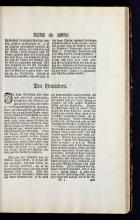
|
This section discusses the importance of proper planning and execution in drawing figures, especially with garments. It emphasizes incorporating elegance into the structure of the figure while considering the clothing as part of the design. It also notes that errors made by others should be used as learning points to improve accurate form representation. |
| Pariset - New Book - Page 5 |

|
The text discusses the principles of effective drawing, emphasizing the importance of focusing on essential features and maintaining proper proportions, particularly at joints. It stresses the significance of adding shading and details to enhance the beauty of a figure, recommending a comparison technique to prevent errors. The text also highlights the influence of renowned artists like Raphael and Annibal Caracci, who serve as examples of excellent form and art. |
| Pariset - New Book - Page 6 |
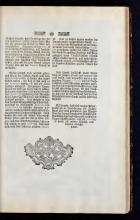
|
The text emphasizes the importance of practice and repetition in drawing, recommending the study of anatomy to improve artistic skills. It praises art academies for providing opportunities for learning and includes a reminder that the techniques discussed can be applied broadly to various subjects. The author hopes that these instructions will foster growth and benefit artists and students alike. |
| Pariset - New Book - Page 7 |

|
The page contains a Latin phrase indicating authorization or approval from a religious or scholarly body in Paris. This note likely signifies a formal or ecclesiastical endorsement required for publication. |
| Pariset - New Book - Page 8 |
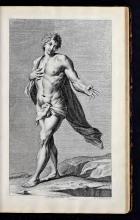
|
|
| Pariset - New Book - Page 9 |
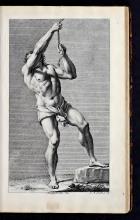
|
|
| Pariset - New Book - Page 10 |

|
|
| Pariset - New Book - Page 11 |

|
The text provides engraver details, indicating the work was engraved by G.W. Prouty. It reflects the typical notation for acknowledging the artist and engraver's contributions in the image. |
| Pariset - New Book - Page 12 |
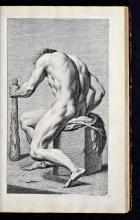
|
|
| Pariset - New Book - Page 13 |

|
|
| Pariset - New Book - Page 14 |
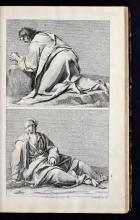
|
The text consists of artist attributions for the two illustrations on the page. It mentions J. Fridrich as having created one illustration in May, and B. N. De F. is noted for inventing and engraving. These credits provide information on the contributors to the artwork. |
| Pariset - New Book - Page 15 |
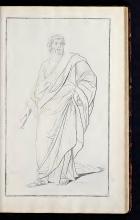
|
|
| Pariset - New Book - Page 16 |
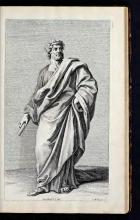
|
The Latin text "Cum Privl S. C. Maj" translates to "With privilege Saint Clement Mayor." It is likely a notation of privilege or authorization related to the publication. |
| Pariset - New Book - Page 17 |
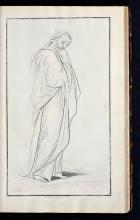
|
|
| Pariset - New Book - Page 18 |
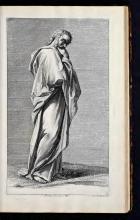
|
The text indicates that the engraving was done by C. Pontius with the authority of the Royal Academy. It suggests the quality and official nature of the artwork. |
| Pariset - New Book - Page 19 |
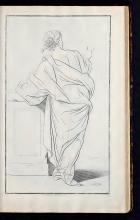
|
|
| Pariset - New Book - Page 20 |
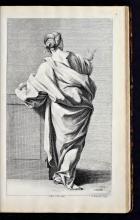
|
The page contains an engraving of a figure in draped clothing, with the text indicating that the work was engraved by G. N. Prester. The image exemplifies the detailed art style of the 18th century, as found in R.M. Pariset's drawing book. The artwork focuses on the texture and folds of the fabric and the hairstyle of the figure. |
| Pariset - New Book - Page 21 |
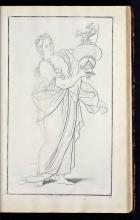
|
|
| Pariset - New Book - Page 22 |
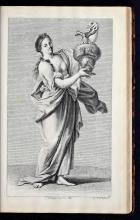
|
The text identifies the creators of the engraving, C. Amic and G. H. Sperling. C. Amicolus made it in May, and G. H. Sperling served as the etcher. The terms used are typical of 18th-century art documentation, noting the artist and etcher's involvement. |
| Pariset - New Book - Page 23 |
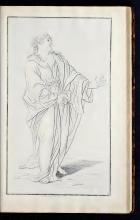
|
This image is a line drawing of a figure in flowing robes, attributed to the artist C. Bourbon. The robes are depicted with intricate detail, demonstrating classical artistic techniques. The figure appears to be gesturing or in motion, highlighting a study of movement and drapery. |
| Pariset - New Book - Page 24 |
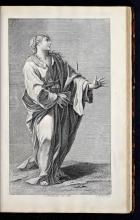
|
The text credits C. Pariset as the creator of the artwork in Paris. The page likely features a classical illustration from an 18th-century drawing book by R.M. Pariset, emphasizing drawing techniques. The book compiles studies from distinguished artists, both ancient and modern. |
| Pariset - New Book - Page 25 |
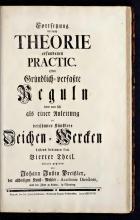
|
The page is a title page for a section of a book outlining the effective use of drawing principles taught by theory. It presents itself as a guide for creating drawings in the style of renowned artists. The publication details indicate it was released in 1757 by Johann Justin Preissler in Nuremberg. |
| Pariset - New Book - Page 26 |

|
The text is a formal address to students of drawing, detailing the author's methodologies and the legacy of his father's teachings. It includes a theoretical discourse on drawing, illustrating the steps for establishing proportions in the depiction of a child's figure using the head as a reference point. The text blends practical advice with philosophical reflections on the art of drawing and pedagogy. |
| Pariset - New Book - Page 27 |
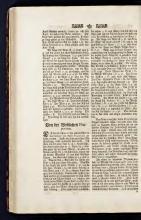
|
The text discusses the distribution of head sizes and female proportions. It explains the balancing of head measurements up to the lower jaw. Additionally, it notes the consistency with previously discussed sections and measurements. |
| Pariset - New Book - Page 28 |
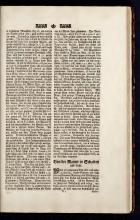
|
The text discusses how to use shadows and light to give objects, such as a sheet, a sense of roundness. It emphasizes that correct proportions and outlines are essential before focusing on the rendering of shadows. The approach involves ensuring that the object's form is accurately represented. |
| Pariset - New Book - Page 29 |
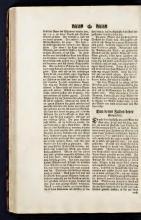
|
The text discusses five different types of shadows relevant in art, emphasizing how they blend and impact artistic depictions. Techniques are provided for working with shadows on paper using black chalk, focusing on enhancing portrayals. Additionally, advice on depicting the folds of garments is given, referencing notable artists like Leonardo da Vinci. |
| Pariset - New Book - Page 30 |
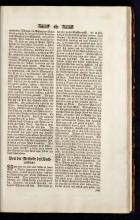
|
The text explains the precise execution required for tracing, emphasizing the importance of clean work and accurate outlines. It contrasts different stages and gives an example involving engraving, with attention to maintaining proportion. It further details methods for ensuring correct proportions and how overemphasis on certain parts should be avoided, incorporating translation notes to clarify historic references. |
| Pariset - New Book - Page 31 |
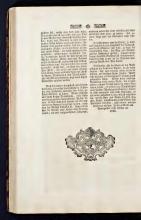
|
The text discusses the importance of learning geometry to enhance drawing skills, especially in rendering outlines. It emphasizes using lines to convey forms, suggesting an observant eye is necessary for capturing beauty, particularly in masculine faces. The importance of methodical practice and the promotion of artists through understanding one's power in art is also highlighted. |
| Pariset - New Book - Page 32 |

|
The image includes labeled sections 'A' and 'B', with sequences of numbers. These appear to serve as guides for referring to different parts or measurements of the illustrations shown in the drawings. |
| Pariset - New Book - Page 33 |

|
|
| Pariset - New Book - Page 34 |
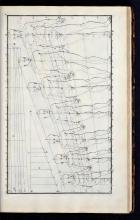
|
|
| Pariset - New Book - Page 35 |
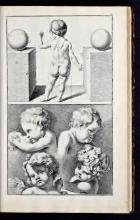
|
This page contains labeled illustrations used to teach drawing techniques, focusing on the human form and spatial relationships. The annotations provide guidance on interpreting the drawings in an 18th-century artistic context. The specific meanings of the letters are likely part of a broader instructional text not visible here. |
| Pariset - New Book - Page 36 |
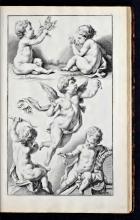
|
|
| Pariset - New Book - Page 37 |

|
|
| Pariset - New Book - Page 38 |

|
|
| Pariset - New Book - Page 39 |

|
|
| Pariset - New Book - Page 40 |
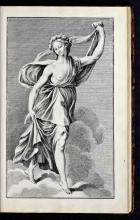
|
|
| Pariset - New Book - Page 41 |
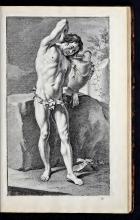
|
|
| Pariset - New Book - Page 42 |
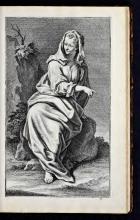
|
|
| Pariset - New Book - Page 43 |
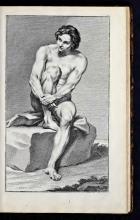
|
|
| Pariset - New Book - Page 44 |
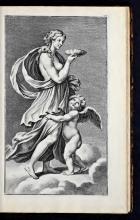
|
|
| Pariset - New Book - Page 45 |
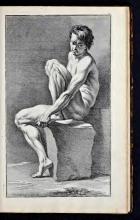
|
|
| Pariset - New Book - Page 46 |
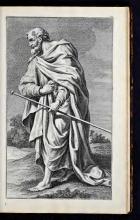
|
|
| Pariset - New Book - Page 47 |
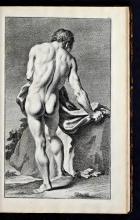
|
|
| Pariset - New Book - Page 48 |
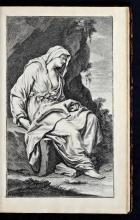
|
|
| Pariset - New Book - Page 49 |

|
|
| Pariset - New Book - Page 50 |
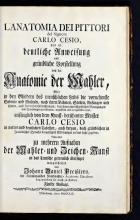
|
This text is a title page of a book presenting anatomical instructions for painters, originally by Carlo Cesio. It describes how the book covers the anatomy of bones and muscles, with explanations initially in Italian and translated into German by Johann Daniel Preißlern. This edition is aimed at enhancing the skills in painting and drawing arts, published in 1759. |
| Pariset - New Book - Page 51 |
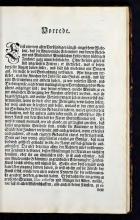
|
The foreword emphasizes the importance of anatomical knowledge for artists, asserting that understanding the bones and muscles of the human body is crucial for producing work that aligns with nature. It argues that such knowledge allows an artist to more accurately represent and interpret the human form, providing a significant advantage in both replication and creative expression. The text also highlights the exemplary works of ancient artists as models of perfection due to their anatomical accuracy. |
| Pariset - New Book - Page 52 |
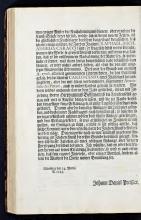
|
Johann Daniel Preissler discusses the importance of imitating great artists like Raphael and Michelangelo and emphasizes the role of anatomical knowledge in achieving artistic success. He explains his efforts to provide artists with supplemental instructional tables to enrich their understanding of anatomy, inspired by Carlo Cesio's work. Preissler hopes that these efforts are recognized as solely for advancing art without personal gain. |
| Pariset - New Book - Page 53 |
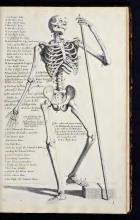
|
The image features a detailed drawing of a human skeleton with labeled annotations corresponding to the text on the left. The labels identify various bones, including the upper jaw, lower jaw, breastbone, and thigh bone, among others. The drawing is intended as a reference to understand the anatomical structure of the human skeleton. |
| Pariset - New Book - Page 54 |
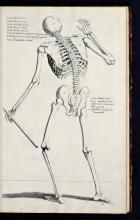
|
The text is a set of annotations identifying different parts of a human skeleton in German. It includes names for bones like the sacrum, shoulder blade, and pelvis, with some terms explained. The annotations are likely meant to aid in understanding the accompanying skeletal illustration. |
| Pariset - New Book - Page 55 |
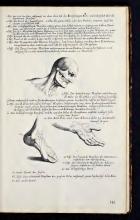
|
This page describes various muscle and bone structures in the human body, focusing on their origins, movements, and functions. Specific muscles detailed include those affecting the forehead, jaw, cheeks, lip, and foot, as well as their roles in movement and stability. Accompanying illustrations provide a visual understanding of these anatomical features. |
| Pariset - New Book - Page 56 |
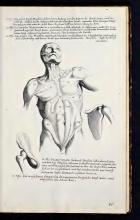
|
The text describes the origins, attachments, and functions of various muscles located in the chest and abdomen. It discusses the large chest muscles, straight muscles, serratus muscles, and others, noting their roles in movements like arm drawing, abdominal compression, and chest expansion. Specific anatomical terms are explained, such as "breastbone" for sternum and "white linea" for linea alba. |
| Pariset - New Book - Page 57 |
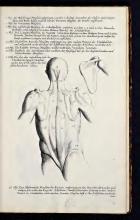
|
This page focuses on the description of various muscles in the human back, detailing their origins, insertions, and functions. It explains how these muscles contribute to movements such as lifting the head, straightening the back, and manipulating the scapula. The text serves as an anatomical guide for artists, using illustrative terms to describe the muscle grouping and actions. |
| Pariset - New Book - Page 58 |
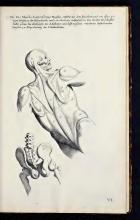
|
The text describes a muscle in the upper body, specifically emphasizing the origins and insertions of the monk-cap shaped muscle, likely referring to the trapezius. It details its anatomical connections from the vertebrae and neck protrusions to the shoulder blades, highlighting its role in lifting the shoulder blades. The text focuses on anatomical terms and their importance in art for accurate depiction. |
| Pariset - New Book - Page 59 |
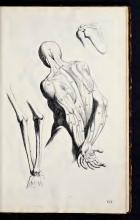
|
The image contains anatomical drawings with numbered points, illustrating human muscles and joints, particularly focusing on the back and arm. This serves as a study reference for artists drawing human anatomy. |
| Pariset - New Book - Page 60 |
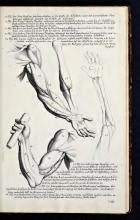
|
The text describes the anatomical structure and function of various arm muscles, focusing on their origins, insertions, and roles in arm movement. It details how muscles work together to facilitate movements such as lifting, rotating, and bending the arm, elbow, and hand. The descriptions are complemented by anatomical illustrations on the same page. |
| Pariset - New Book - Page 61 |
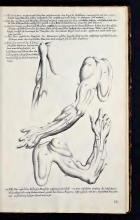
|
The text describes various muscles in the arm, explaining their origins, paths, and points of insertion, especially around the elbow and wrist. It highlights the interaction and complexity of these muscles, providing insight into their functionality. The text serves as anatomical guidance, likely intended for artists to understand better human muscle structure for drawing purposes. |
| Pariset - New Book - Page 62 |
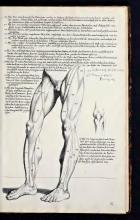
|
This page contains detailed anatomical descriptions of human leg muscles, explaining their origins and attachments. The text describes various muscles including the sartorial or tailor's muscle, their functions, and interactions in moving the foot and leg. The emphasis is on understanding the muscle structure for artistic replication. |
| Pariset - New Book - Page 63 |
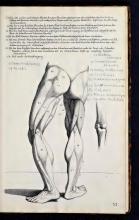
|
The page contains detailed descriptions and drawings of the muscles of the human leg from the back view. It explains the origin, pathway, and function of muscles like the gluteus maximus and the biceps femoris in German. This serves as an anatomical guide to understanding muscle structure and movement, likely for artistic and educational purposes. |
| Pariset - New Book - Page 64 |
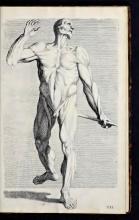
|
The text 'XII' indicates a page number or an illustration number within the book. The focus is on an anatomical study relevant to art instruction. The image is part of a historic book on drawing and anatomy by R.M. Pariset, published in 1748. |
| Pariset - New Book - Page 65 |

|
|
| Pariset - New Book - Page 66 |
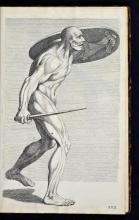
|
There is no substantial text to translate or summarize, except for a page number "XIIII." |
| Pariset - New Book - Page 67 |
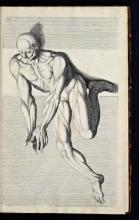
|
The image contains the notation 'AX' but has no other text. It features a detailed anatomical drawing of a human figure in motion. The rendering is consistent with 18th-century studies of the human form. |
| Pariset - New Book - Page 68 |
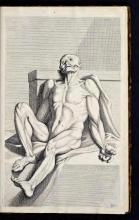
|
COPYRIGHT © 2025 STUDY DRAWING. ALL RIGHTS RESERVED.